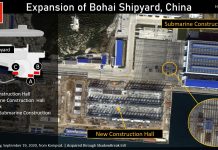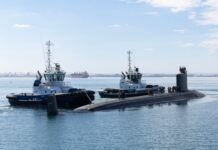
By Dr Anupama Vijayakumar*
An unusual kind of tension is brewing in Northeast Asia. In a first, China deployed its Liaoning and Shandong aircraft carriers to the Pacific, generating fresh friction with Japan. The Chinese carriers sailed close to the island of Iwo Jima, a strategically important base of the Japan Self Defense Forces (JSDF), situated around 1200 kilometres from Tokyo, and 1300 kilometres from the US facilities located on Guam. (From The Interpreter. The Lowy Institute.)
While the East China Sea has borne witness to similar activities in the past, China’s first foray beyond these waters to the east of the Ryukyu Island chain is symbolic. It signifies the capability of the PLA Navy to cover the “second island chain” – which includes Guam and the southern Ryukyu islands, situated near Taiwan.
Tensions escalated further with an aerial skirmish between a Chinese and Japanese aircraft above Japan’s exclusive economic zone. This latest flareup may be a sign of dangers that lie ahead in this theatre.
The new tensions have followed a major demonstration of military power from Japan. On 8 June during the Fuji Firepower exercises, Japan demonstrated components of its counterstrike capability for the first time, test-firing the Type 12 (12SSM) Coastal Defence Missile System. Japan plans to deploy these long-range coastal defence launcher vehicles at Hokkaido and Kyushu, its southernmost island. China has perceived the same as Japan making a clear break from pacifism to acquire first-strike capabilities in the name of counterstrike capabilities.
Understanding what comes next involves first taking stock of some unique factors that contribute to threat perception in the East Asian context. Threat perception has dominantly been understood as a function of perceived capabilities multiplied by perceived intent. However, the security dynamics in the East Asian context are often not so black and white.
While primarily informed by centuries-old experiences of contestation, conflict and cooperation, Sino-Japan relations in the post-Second World War era have largely been peaceful, albeit uneasy. Their mutual perception of threat is rendered complex by the priorities dictated by the United States, an ally to Japan and a strategic competitor to China. This causes both countries to attach certain levels of symbolism to actions and events. Further complicating matters is the deliberately ambiguous language often used by both China and Japan in communicating goals and their underlying intent. In this regard, a lack of proper information on intent causes both countries to view each other’s strategic ambitions as detrimental to their long-term interests.
Broad scepticism aside, underlying the stable Sino-Japan dynamic for decades had been Japan’s staunch adherence to its pacifist constitution. In nominal terms, China had nearly no threat perception from a country whose constitution outrightly bans its right to wage war and imposes strict limitations on possessing capabilities that amount to war potential. The uneasy yet peaceful dynamic was also aided by close economic relations. However, the scenario transformed following the 1996 Taiwan Strait crisis, as both countries started to implement a progressive military build-up.
The two Asian powers are pushing deeper into a complex kind of security dilemma amid unpredictability around an unconventional US leadership.
The announcement of the US Asia-Pacific rebalancing strategy in 2011 with Japan being a key lynchpin state also indirectly pulled Tokyo into a competition with China. Tensions erupted over the Senkaku/Diaoyou island dispute in 2012 and got worse after China’s declaration of an Air Defence Identification Zone over the East China Sea in 2013. The islands have continued to be a source of contention in the bilateral relationship, with China frequently engaging in military activities in maritime and air space in the area.
More recently, Japan’s announcement of the 2022 National Security Strategy (NSS) has added a new layer to Sino-Japan ties. Laying the groundwork for Tokyo to implement a five-year military build-up until 2027, the NSS lays down the counterstrike doctrine. Marking a departure from an exclusively self-defence-oriented policy, the counterstrike doctrine creates a legal basis for the JSDF to engage in enemy base strikes to address imminent threats. Simultaneously, Japan also announced its intent to raise its military spending to 2 per cent of its GDP.
The subsequent period has witnessed an emboldened Japan, one keen on projecting its military might to deter China. In a first-of-its-kind incident in September 2024, Japanese destroyer JS Sazanami sailed through the Taiwan Strait as a stern response to Chinese aggression in the East China Sea and the South China Sea. In February 2025, the destroyer JS Akizuki once again traversed these waters as Japan re-asserted its freedom of navigation. Both instances invoked strong protests from Beijing.
The two Asian powers are pushing deeper into a complex kind of security dilemma amid unpredictability around an unconventional US leadership. The increasing friction between the two is a manifestation of them preparing for a fallout of a sudden shift in US foreign policy. As Japan seeks to strengthen its own military power and prove itself to be an indispensable ally to the United States, the delicate balance of power in East Asia is primed to collapse.
*Dr Anupama Vijayakumar is a Co-founder and Director of Trivium Think Tank, Thiruvananthapuram, India. Her research focuses on the role of science and technology in driving great power competition in the post-industrial era.



